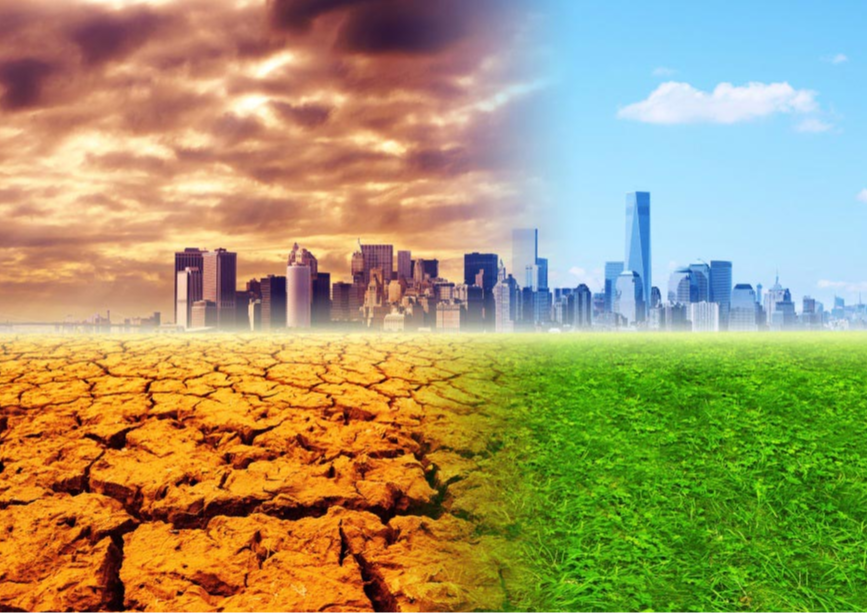
The imperative for climate action has become undeniable as the world witnesses record-breaking annual global temperatures and catastrophic climate hazards. Addressing climate change involves two fundamental pathways: mitigation to reduce greenhouse gas (GHG) emissions causing global warming, and adaptation to moderate the harm from climate change effects. Although both pathways are complementary, the global spotlight is predominantly on mitigation, inadvertently overlooking a substantial adaptation gap. Despite the optimism surrounding the Paris Agreement, the harsh reality is that we are on a trajectory to breach the 1.5 degrees Celsius limit for global temperature. The Intergovernmental Panel for Climate Change (IPCC) forewarns of this potential breach as early as the 2030s. In this current trajectory, coping with and adapting to climate impacts is no longer a marginal option but an urgent necessity. Failure to adapt will result in a wide range of devastating human, economic, and environmental losses and damages.
Addressing climate change involves two fundamental pathways: mitigation to reduce greenhouse gas (GHG) emissions causing global warming, and adaptation to moderate the harm from climate change effects.
Such a significantly narrow window for climate-resilient development demands a grounded and realistic approach to confront this scenario, emphasising the need to adapt while simultaneously sustaining efforts to mitigate further warming.
Urban adaptation challenges
The need for climate adaptation becomes particularly crucial at the urban level, where the majority of the global population resides and directly experiences climate impacts. This is especially pertinent for cities in developing countries like India and Africa, where future development is currently underway. Much of the essential infrastructure, such as water supply, electricity, and sewerage, is yet to be built, and the existing infrastructures have not been designed to account for current climate events. Moreover, billions inhabit informal settlements like slums, lacking basic services and often residing in areas outside development regulations. The escalating climate risks in these regions exacerbate their existing challenges, with floods, heatwaves, and heavy rainfall rendering them increasingly inhospitable. Thus, the implementation of adaptation measures must prioritise a local approach, placing a renewed emphasis on managing risks and building resilience alongside ongoing development efforts.
The escalating climate risks in these regions exacerbate their existing challenges, with floods, heatwaves, and heavy rainfall rendering them increasingly inhospitable.
Indian cities face several challenges in achieving effective climate adaptation. Firstly, there is a significant dilution of responsibilities at the national, state, and local levels, resulting in unclear, fragmented, or overlapping mandates on ‘who does what’. Municipalities frequently encounter constraints in their legal authority from national and state governments to implement more advanced measures for climate adaptation. Solutions typically adhere to a project-oriented, ad hoc approach rather than a comprehensive one. For instance, while flood management does not solely fall under the municipality's mandate, crucial elements like drainage, integral for flood reduction, do. This leads to standstills and a lack of emphasis on climate change in the municipality’s agenda.
Moreover, the language and understanding of climate change, particularly adaptation, prove challenging for those outside the field. Municipality decision-makers often lack awareness of the existence and complexity of climate change, leading to decisions without accounting for climate considerations. Adding to that, city officials may lack the data and information on urban areas and climate risks—the bedrock for understanding the current climate change situation. Without comprehensive data on the systemic risks and their cascading effects, they tend to break down the complex problem of climate change into siloes and deal with each of them separately (such as flood, drainage, waste etc.), instead of adopting an integrated approach. Furthermore, these officials frequently lack the technical capacities and resources needed for the proper implementation of hard infrastructure and technological solutions for adaptation.
Municipality decision-makers often lack awareness of the existence and complexity of climate change, leading to decisions without accounting for climate considerations.
All these challenges create a vicious cycle that impedes climate adaptation efforts and, ultimately, impedes meaningful climate action.
Moving towards resilient cities
A dedicated approach to integrating adaptation into urban climate action is essential for tackling the challenges posed by climate change. Bold strategies are needed for achieving resilient cities, which could revolutionise the understanding, planning, and finance for adaptation.
City authorities must proactively expand their collection of urban and climate data. Establishing a state-level city climate cell can streamline this data collection and foster coordination, standardisation and quality control processes.
Assessments and analytical tools play an important role in understanding climate risks and grassroots efforts, especially in vulnerable areas like slums and other informal settlements. Adopting a holistic approach that incorporates a mix of local, indigenous, and scientific knowledge is key. Community-led data collection and monitoring tools can fill information gaps in informal settlements, which follow their unique development style. Engaging the community in climate action not only empowers residents but also enhances their adaptive capacity, preparing them to respond more effectively and collaboratively to climate challenges. Additionally, the active participation of NGOs, academic institutes, and think tanks in data collection and analysis can introduce the latest climate models, trends, and on-the-ground activities, further contributing to policy recommendations for decision-makers.
Engaging the community in climate action not only empowers residents but also enhances their adaptive capacity, preparing them to respond more effectively and collaboratively to climate challenges.
Strengthening the capabilities of local governments is pivotal for understanding climate risks, devising solutions, and managing adaptation initiatives sustainably. The creation of an overarching Climate Change Department within the Municipality staffed with trained experts may boost the technical capacity of local authorities, and create a conducive environment for climate solutions. This department could also aid the municipality in communicating effectively with the public, ensuring that complex climate concepts are conveyed in a manner that resonates with the community.
Lastly, collaborative efforts on the investment front are vital, considering that only 5 percent of the total climate finance was specifically allocated for adaptation efforts in 2021–2022. Industry players and international funding agencies should contribute grants for cross-disciplinary research and analysis. Multilateral Development Banks (MDBs) could place greater emphasis on ensuring the embeddedness of climate resilience within the financial frameworks and implementation mechanisms of development projects in cities. Moreover, global platforms like the Conference of the Parties (COP), Group of Twenty (G20) etc. can play a vital role in securing commitments from developed countries to assist developing nations and creating an enabling environment for urban climate action.
Multilateral Development Banks (MDBs) could place greater emphasis on ensuring the embeddedness of climate resilience within the financial frameworks and implementation mechanisms of development projects in cities.
With further warming, every corner of the world stands on the brink of encountering severe climate crises. It is evident that for most cities, conventional coping strategies and incremental adjustments are likely to fall short in the face of impending climatic challenges. Addressing these burdens will require a transformational shift to their very underpinnings—in planning, infrastructure, governance, consumption patterns, and economies. Most importantly, achieving this kind of change means involving and co-producing solutions closely with the people in the city. Ultimately, we must seek transformative approaches that can potentially integrate the objectives of climate change mitigation and adaptation with the development agenda, while simultaneously promoting socially just and ecologically sustainable development.
Rhea Srivastava is an Associate Fellow at The Energy and Resources Institute (TERI)
The views expressed above belong to the author(s). ORF research and analyses now available on Telegram! Click here to access our curated content — blogs, longforms and interviews.




 PREV
PREV


